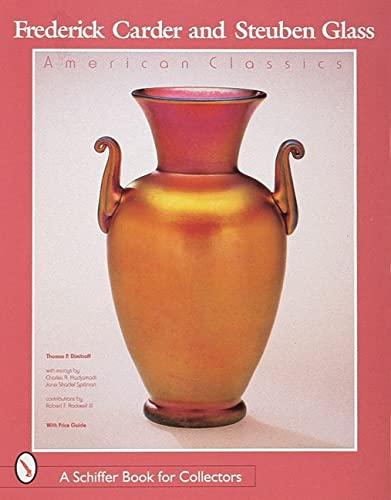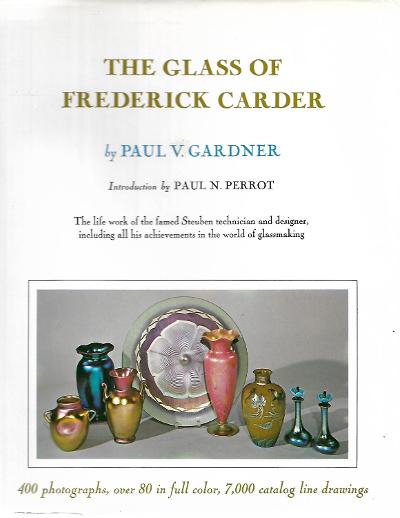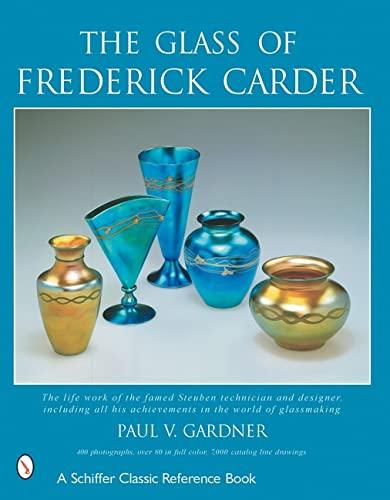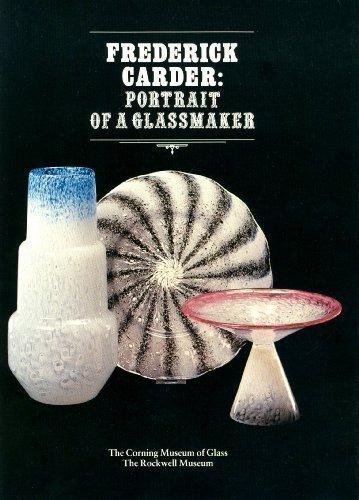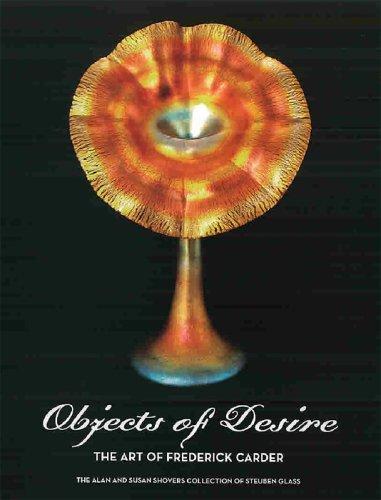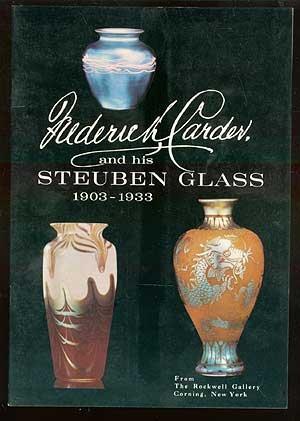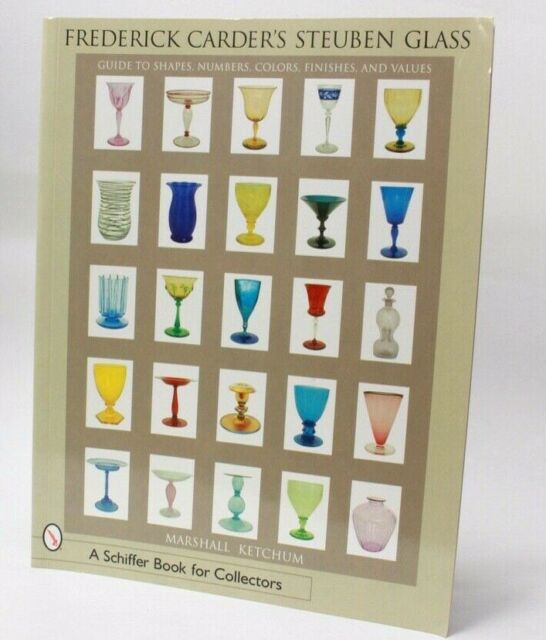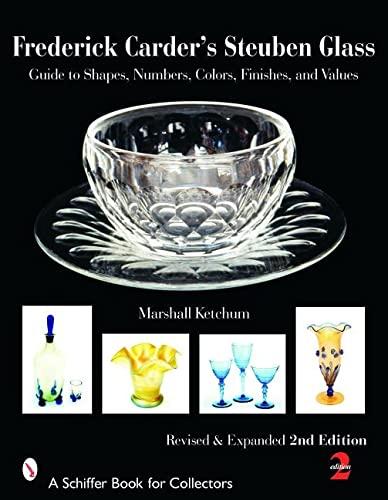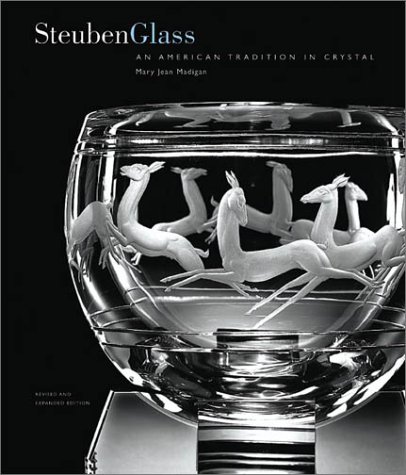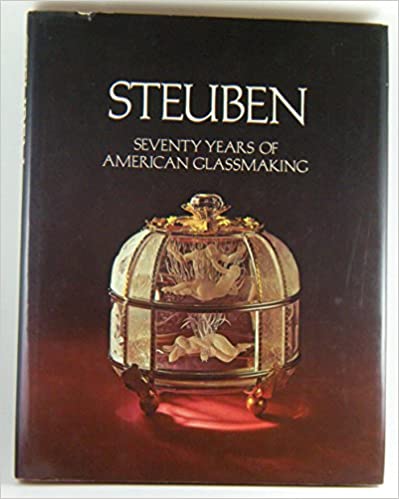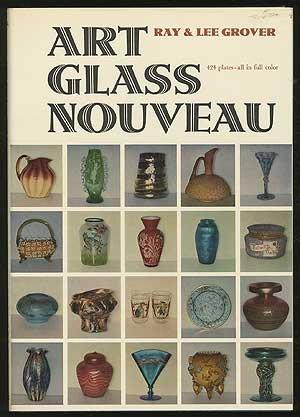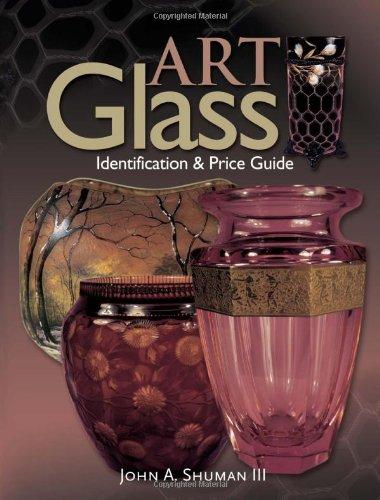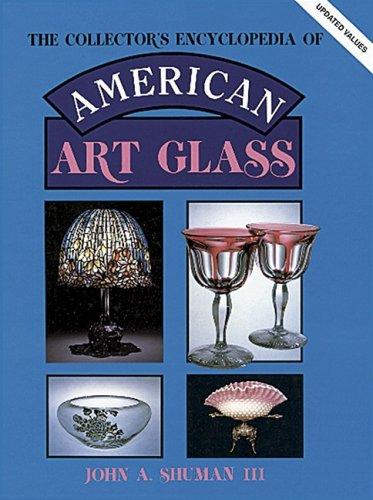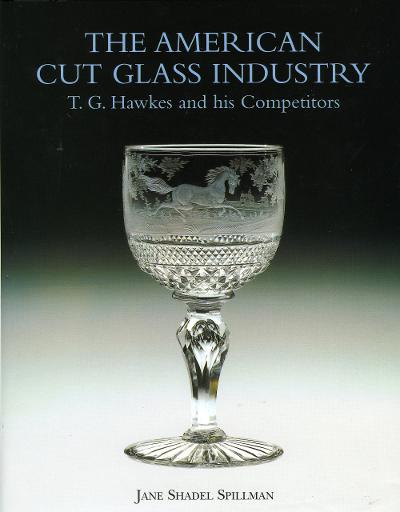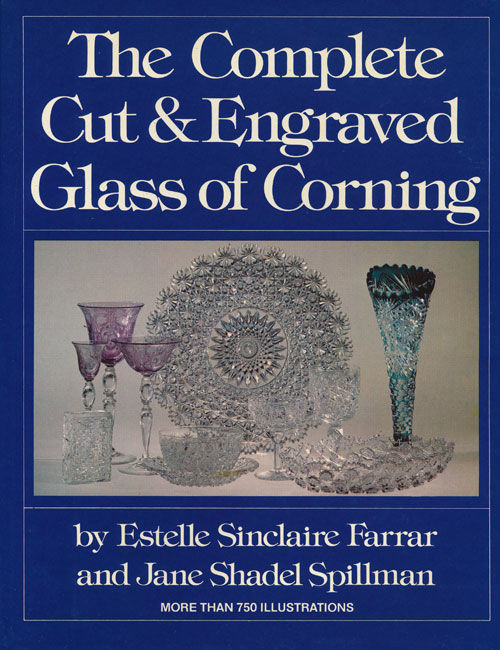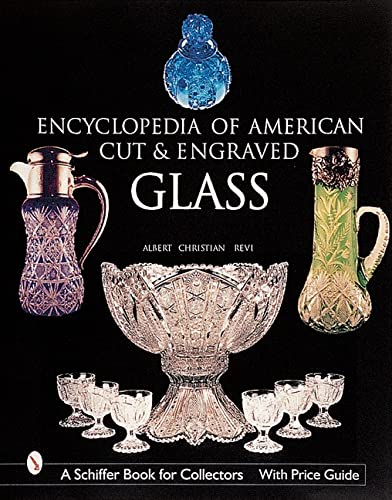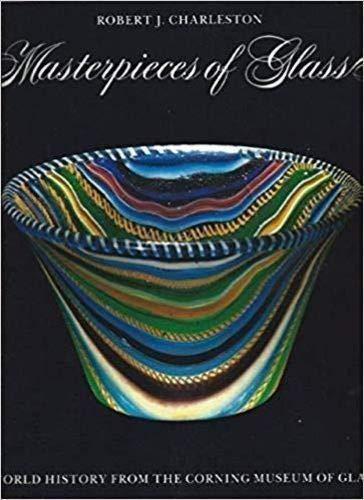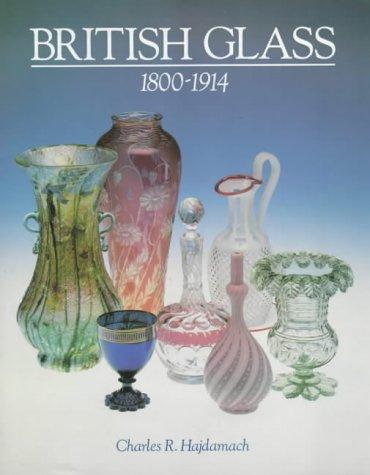

Resources
This section provides access to bibliographies and other informational and research materials.
Suggested titles for a basic library on Steuben Glass
Dimitroff, Thomas P. Frederick Carder and Steuben Glass. Atglen, PA: Schiffer Publishing Ltd., 1998. Published in association with the Rockwell Museum, Corning, NY, this book includes essays by glass scholars Charles Hajdamach and Jane Shadell Spillman and contributions from premier collector Robert F. Rockwell III. The 333 page volume is a comprehensive look at Frederick Carder the man and Frederick Carder the glass scientist, glass artist and glass innovator. Its 760 photographs highlight Steuben glass from the Rockwell collection. The book covers Carder’s early years in England and chronicles his glass creations through various design periods. There is an extensive discussion of signatures and Steuben identification. A section of line drawings contains examples from sources not available when Paul Gardner’s book containing line drawings was published. Finally, there are five appendices, including a timeline illustrating milestones in Carder’s life and the development of Steuben glass, tips for dating Steuben glass, patents, and a signature chart illustrating the type of signature associated with various glass types. Also included is a comprehensive bibliography of books, articles and other sources on Frederick Carder and his glass.
Gardner, Paul V. The Glass of Frederick Carder. Atglen, PA: Schiffer Publishing Ltd., 2000 (reprint of 1971 edition). Paul Gardner was Carder’s assistant for over a decade and a friend for some 30 years. His book is considered to be the most comprehensive work on Frederick Carder and his 80 year glassmaking career. Biographical material chronicles Carder’s life and achievements from his youth in his native England and his commitment to a career in glassmaking, through his phenomenal achievements as head of the Steuben Glass Works in Corning, NY, and finally his studio glass years that lasted almost to the end of his 100 years of life. Additionally, Gardner provides detailed explanations on the chemical makeup and fabrication techniques for many of Carder’s innovative glass types. The book contains 220 pages that show approximately 7000 factory line drawings and their accompanying numbers, and includes illustrations from Steuben catalogs. Their publication provides Steuben collectors and glass scholars with an invaluable reference to aid in identification of Steuben glass. Gardner’s book reflects both his personal knowledge of Carder as a mentor and friend, as well as his meticulous research and documentation of Carder’s artistic and technological innovations in glassmaking.
Gardner, Paul V. Frederick Carder: Portrait of a Glassmaker. Corning, NY: The Corning Museum of Glass and the Rockwell Museum, 1985. In this catalog accompanying a special exhibition of Carder Steuben glass, author Paul Gardner gives a thumbnail portrait of Frederick Carder’s life and work, a condensed version of his comprehensive 1971 book, The Glass of Frederick Carder. Gardner provides a fairly detailed overview of the types of glass that were the focus of Carder’s work in his years in England (1863-1903), his years at the Steuben Glass Works (1903-1932) and his work during the Studio period (1932-1963). The book contains 75 beautiful photographs of examples from each of the time periods. They display a panoply of Carder’s innovative forms, colors and techniques of production.
Shovers, Alan. Objects of Desire—the Art of Frederick Carder. Evansville, IN: The Evansville Museum of Arts, History and Science, 2005. Objects of Desire was created to accompany an exhibition at the Evansville Muselum of the Alan and Susan Shovers collection of Steuben glass. Shover’s book is essentially a photographic tribute to the glass genius, Frederick Carder. Its 165 pages of stunning photographs depict prime examples of different types of Carder’s Steuben glass, varied colors and types of decoration of the glass, and a myriad of shapes and forms. Some of the photographs show pieces of the Shover’s collection in situ, being used to decorate their home as they believe Carder intended his glass to be used. While the book is a visual treat, it can also serve as a resource for those who collect and enjoy Carder’s Steuben glass.
Rockwell, Robert F. and Lanahan, Jack. Frederick Carder and his Steuben Glass., 1903-1933. West Nyack, NY: Dexter Press, Inc., 1968, 1975. This small 33 page booklet is primarily a picture book illustrating some 25 categories of colored glass made by Frederick Carder in the years 1903-1933, described by the authors as Carder’s most productive period. The glass pictured was, at that time, part of the Rockwell Gallery collection in Corning, NY. A brief sketch of Mr. Carder’s life and achievements is included.
Ketchum, Marshall. Frederick Carder’s Steuben Glass. Schiffer Publishing, 2002. This book is a valuable aid and references the line drawings used in Gardner’s The Glass of Frederick Carder, auction records and references to photographs in other books that are cited in the cross-reference. The book contains 40 new color photographs of Carder Steuben Glass. (154 pages)
Ketchum, Marshall. Frederick Carder’s Steuben Glass, Guide to Shapes, Numbers, Colors, Finishes and Values. Atglen PA: Schiffer Publishing Ltd.: 2nd edition, 2006. According to the author, this volume is a continuation and expansion of the 2002 edition, designed to assist collectors in the identification and valuation of Steuben glass. Using the shape numbers and Steuben line drawings found in Paul Gardner’s book, The Glass of Frederick Carder, Ketchum has created a table of some 182 pages that contain information about each referenced shape. The table delineates where in Gardner’s book a shape is located, then lists recent auction results for items of that type and, finally, it provides comments and references to photos of Carder Steuben pieces shown in several books. Four appendices 1) explain the abbreviations used for colors and techniques; 2) identify the auction companies whose prices are referenced; 3) explain some anomalous features of Steuben glass; and 4) provide a cross reference of colors and finishing techniques. The book contains 154 color photographs of pieces not shown in other publications, as well as new drawings not included in Gardner’s book.
Madigan, Mary Jean. Steuben Glass: An American Tradition in Crystal. Harry N. Abrams, Inc., New York, NY, 2003 (previous edition 1982). This revised edition of the 1982 book with additional chapters added is THE book for modern Steuben glass collectors. It’s 362 pages are lavishly illustrated. This book traces the history and manufacture of Steuben glass from 1933, when Arthur Amory Houghton, Jr. virtually ceased production of colored glass to focus on making brilliantly refractive clear glass known as 10M by Corning Glass chemists. The book contains a near complete identification guide of all pieces made after 1933, including issue dates, designers, dimensions and other key information. One of a kind and limited edition pieces are also included.
Perrot, Paul; Gardner, Paul and Plaut, James. Steuben: Seventy Years of American Glassmaking. Praeger Publishers, New York, NY. 1974. This book was written in conjunction with a nationwide exhibition of Steuben glass organized by the Toledo Museum of Art to celebrate 70 years of fine American glass production. This 172 page book traces the origins of Steuben glass beginning with Frederick Carder and through the major reorganization by Arthur A. Houghton, Jr. The illustrations offer a portfolio of museum quality pieces made between 1905 and 1973. The text surveys the achievements of the company since its inception and offers interesting information on how individual pieces were crafted in the shop.
Grover, Ray and Grover, Lee. Art Glass Nouveau. Rutland, VT: Charles E. Tuttle Co., 1967 (Seventh printing, 1975). The Grovers have produced what is largely a color picture book of 19th and early 20th century art glass. Very brief descriptions of the glass type introduce each of the 423 color photos that display rarities or exceptional examples of the type. Photos of a number of examples of Frederick Carder’s work are included. These were contributed by the Rockwell Galleries of Corning, NY, as well as by several private collectors.
Shuman, John A. III. Art Glass, Identification and Price Guide. Iola, WI: Krause Publications, 2003. The author has put together examples of European and American art glass of various types, primarily from the late 19th and early 20th centuries. Photographs accompany brief descriptions of glass techniques and the artists and makers employing them. Pp. 92-93 are devoted to Steuben and Frederick Carder. Other examples of Steuben are found in photos from an art gallery, and prices of the pieces are included in the volume’s price guide (p 235).
Shuman, John A. III. The Collector’s Encyclopedia of American Art Glass. Paducah, KY: Collector Books (division of Schroeder Publishing Co.), 1988. Shuman describes this book as “a vivid color guide to numerous art glass types.” Its 335 pages contain thumbnail sketches of glass manufacturers, glass types and colors, valuations and other associated material. Frederick Carder is referenced in several places and numerous examples of Steuben glass are pictured throughout, along with valuations.
Spillman, Jane Shadell. The American Cut Glass Industry: T.G. Hawkes and his Competitors. Woodbridge, Suffolk, U.K.: The Antique Collectors’ Club, in association with the Corning Museum of Glass, 1996. Spillman, long-time curator of American glass at CMOG, has written a comprehensive study of the cut glass industry in Corning, concentrating on T.G. Hawkes. Frederick Carder’s association with Hawkes in establishing the Steuben Glass Works is documented early on in the book. The final chapter includes a fairly detailed discussion of Carder’s designs for cut and engraved glass sold by Steuben from 1903-1918, as well as those from after 1918, when Steuben was sold to Corning Glass Works. This aspect of Carder’s work is often overlooked in other publications chronicling his designs and glass innovations.
Farrar, Estelle Sinclaire and Spillman, Jane Shadel. The Complete Cut & Engraved Glass of Corning. Crown Publishers, Inc., New York, NY. 1979. This book is the product of the co-authors exhaustive research to produce a definitive history of the cut and engraved glass produced in Corning NY from the 1870s to the 1970s. An in-depth account of all the major firms – Hoare, Hawkes, Hunt, Sinclaire, Egginton and Steuben are included. Information about previously unknown shops and about “ghost” companies is also included. 344 pages.
Revi, Albert Christian. Encyclopedia of American Cut & Engraved Glass. Schiffer Publishing, Atglen, PA. 2000. This book reviews major and minor manufacturers of cut glass in at least 16 states over a near 100 year period. Information on the relationship between Hawkes, Egginton and Sinclaire is addressed as well as the founding of Steuben Glass Works. At 376 pages, the reference contains incredible company information, patterns and photographs.
Charleston, Robert J., with contributions by David B. Whitehouse and Susanne K. Frantz. Masterpieces of Glass, a World History from the Corning Museum of Glass. New York: Harry N. Abrams, Inc., 1990. This monograph published by CMOG is the Museum’s attempt to present the history of glass through its collections. Frederick Carder is represented by an example of his Intarsia glass, a beautiful vase donated to CMOG by Carder’s daughter (pp. 210-211).
Hajdamach, Charles R. British Glass, 1800-1914. Woodbridge, Suffolk, U.K.: Antique Collectors’ Club, 1991 (reprinted 1993, 1995, 2003). Although this comprehensive study of British glass contains few direct references to Frederick Carder (pp. 286, 395, 423), it has extensive discussions of the Stevens and Williams Glassworks and types of glass designs and innovations that factory introduced during the last quarter of the 19th century. This, of course, was when Carder was Art Director at S & W and playing an active role there in production and use of experimental techniques.
Carder Steuben Audio Visual Bibliography
Audio Visual Bibliography Compiled by Gail Bardhan, Rakow Library. All materials are available at, and may only be used at, the Rakow Library.
Glass Museums of the US – 2010
This is a selective list, arranged by state, and compiled in 2008-2010 from sources noted below. Information as to hours, the collections, and email contacts, should be verified by contacting the individual museums. Addresses, phone numbers and website contact information have been taken from the website of each museum. This list includes some museums whose collections are the production of just one company. Each museum will have on display a representative selection of the glass collection, and usually not its entire collection is on display.
The list was compiled by Gail P. Bardhan who is a Reference and Research Librarian at the Rakow Library, Corning Museum of Glass
